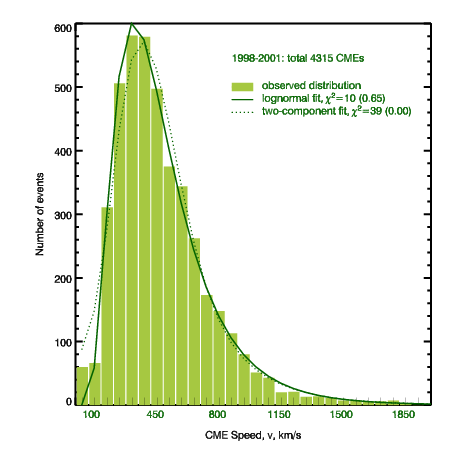

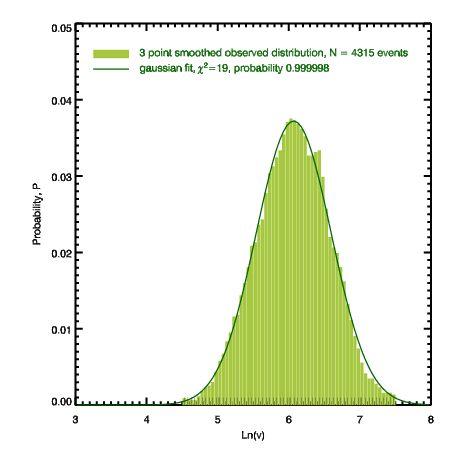
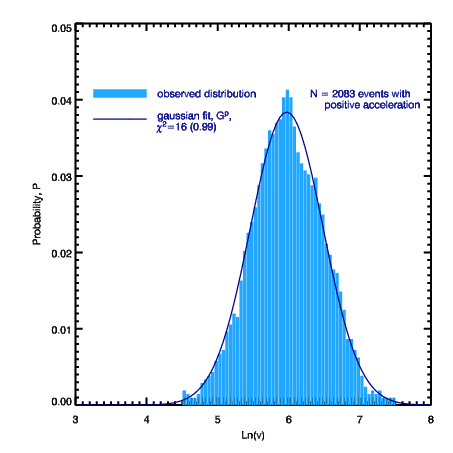 |
| Figure 3.
Log-linear representation of the distribution of the number of
accelerating CMEs, N, versus their speeds, v, determined from the
linear fit to
LASCO data. |
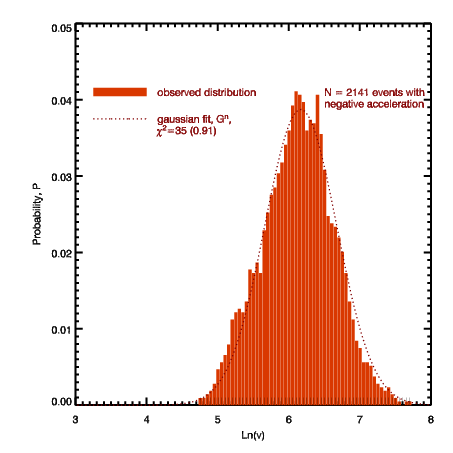 |
| Figure 4. Log-linear representation of the distribution of the number of decelerating CMEs, N, versus their speeds, v, determined from the linear fit to LASCO data. |
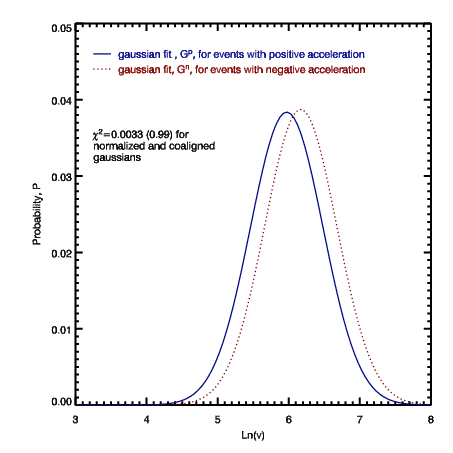 |
| Figure 5. Gaussina fits to N vs ln(v) for accelerating (solid) and decelerating (dotted) events. |